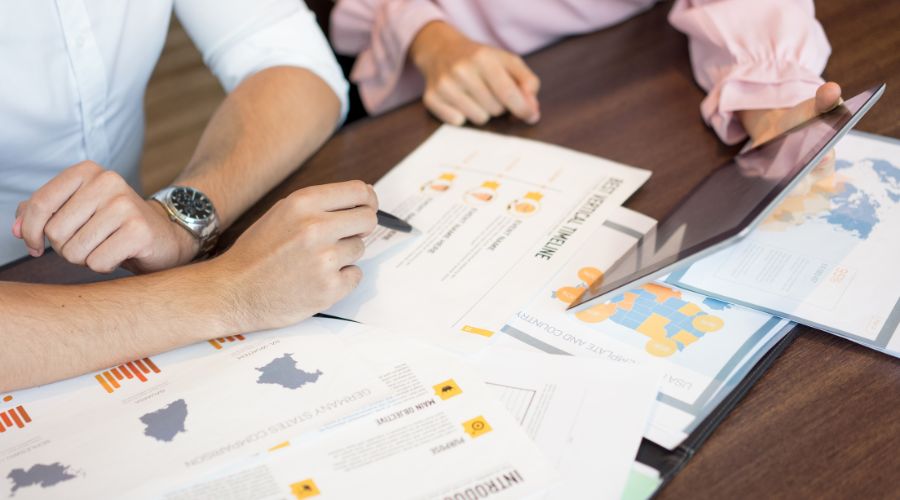Outreach strategy for B2B lead generation must prioritize sustainability to connect with like-minded clients and drive long-term growth.

Image courtesy of https://www.freepik.com/
Amid shifting industry priorities, B2B companies are increasingly integrating environmental responsibility into outreach.
By aligning lead generation strategies with sustainable practices, they not only enhance their brand but also attract clients who value corporate responsibility.
Why Sustainability Matters in B2B Outreach Strategy
In a time when eco-consciousness drives business, sustainability has become a strategic priority. Organizations are on the lookout for collaborators dedicated to sustainable practices.
Sustainable practices in B2B marketing attract clients who value long-term, ethical partnerships.
Indeed, businesses demonstrating eco-conscious practices stand out from competitors still rooted in traditional outreach methods.
Moreover, sustainable outreach strategies build a loyal client base, which is essential for growth.
With this approach, companies align their lead generation tactics with the values of forward-thinking prospects.
Crafting a Green Outreach Strategy That Resonates
Integrating sustainability into outreach requires more than simple “green” messaging. It requires strategic alignment of values and clear action steps.
To begin with, identify the environmental goals of your target audience. This enables you to craft messages that resonate with clients focused on green business practices.
Developing eco-friendly outreach efforts is a two-fold approach. Not only does it meet audience needs, but it also helps your business achieve measurable environmental impact.
Key Elements of a Sustainable Outreach Strategy
There are core elements to consider for a sustainable outreach strategy.
These help companies effectively align their lead generation practices with eco-conscious goals:
1. Eco-Friendly Content Marketing
Reduce paper usage by shifting to digital content, such as blogs, videos, and podcasts. Digital content minimizes waste and extends the reach of your messaging.
Produce content that showcases your dedication to eco-friendly initiatives. For example, sharing behind-the-scenes insights into eco-friendly operations builds trust with clients.
2. Optimized Digital Channels
Prioritize low-energy digital platforms for your outreach. Channels like social media, email, and SEO are effective and eco-friendly ways to reach audiences.
Additionally, optimize your website to be energy-efficient, with fast-loading pages and minimal resource consumption. This enhances the user experience while supporting environmental goals.
3. Green Email Campaigns
Email is among the most energy-efficient outreach tools available. Therefore, create eco-conscious email campaigns to reduce your carbon footprint.
Also, craft personalized messages that highlight your sustainability efforts. Sustainable messaging resonates with clients who prioritize environmental impact in their purchasing decisions.
4. Sustainable Event Marketing
Incorporate virtual events into your outreach. Virtual events save resources, reduce travel emissions, and are accessible to global audiences.
When in-person events are necessary, use eco-friendly materials. For instance, opt for reusable, recyclable, or biodegradable materials to reduce environmental impact.
A Client-Centric Approach to Sustainability in B2B
For B2B lead generation, a client-centric approach is essential. Therefore, align your outreach strategy with the values and preferences of eco-conscious clients.
Clients are drawn to companies that share their commitment to sustainable practices. Showing tangible results in environmental responsibility differentiates your brand.
Furthermore, transparency is crucial. Clients want to see real data and examples of your sustainable efforts rather than vague promises.
Crafting Your Sustainable Brand Story
Sustainable B2B outreach goes beyond products and services.
It includes building a brand story that highlights environmental responsibility:
- Showcase Your Commitment: Use outreach to share real initiatives, such as reducing waste or adopting renewable energy.
- Engage Clients with Storytelling: Share client success stories where sustainable practices led to measurable improvements. Storytelling builds stronger client connections.
- Be Honest and Transparent: Avoid exaggerating your environmental impact. Clients value honest efforts and realistic goals in sustainable practices.
Practical Tips for Eco-Friendly Outreach Execution
Integrating sustainability into your outreach strategy can be straightforward.
Here are some practical steps for eco-friendly lead generation:
- Digital-First Approach: Opt for digital channels over printed materials, reducing paper waste and enhancing efficiency.
- Energy-Conscious Messaging: Minimize data-heavy content to reduce energy use and improve message load speed.
- Paperless Proposals and Contracts: Use digital contracts to reduce the need for physical documents, aligning with your green initiatives.
- Use Renewable-Energy-Powered Tools: Many CRM and email platforms offer green-energy options, helping reduce the carbon footprint of your digital marketing tools.
How Eco-Conscious Clients View Sustainable Outreach
Eco-conscious clients prioritize brands with sustainable practices. Specifically, they seek transparency, impact, and genuine commitments to environmental responsibility.
These clients want to know how a brand’s outreach strategy aligns with environmental values. They prioritize companies with measurable initiatives, such as waste reduction and energy efficiency.
Additionally, clients value partnerships that positively impact the environment. They consider your outreach strategy an extension of your values and prefer brands actively reducing their environmental footprint.
The Role of Data and Metrics in Green Outreach Strategy
Data-driven decisions enhance the effectiveness of a sustainable outreach strategy.
Tracking environmental metrics also strengthens your commitment to sustainable practices:
- Energy and Resource Tracking: Measure the energy used by digital campaigns and online platforms. These insights enable you to pinpoint potential areas for energy conservation.
- Client Engagement Metrics: Track engagement to assess the impact of green-focused messaging. Sustainable messages often yield higher engagement among eco-conscious clients.
- Environmental Impact Reports: Create reports that show the positive environmental impact of your outreach. Sharing these reports builds client trust and reinforces your brand values.
- Incorporating Green Technology into B2B Outreach
- Green technology enhances the sustainability of B2B outreach. From virtual meeting tools to energy-efficient CRM systems, these technologies reduce environmental impact.
- Virtual Collaboration Platforms: Platforms like Zoom and Microsoft Teams support remote outreach, reducing the need for travel and physical meetings.
- Data-Efficient CRM Systems: Choose CRM platforms optimized for low energy use. As a result, this reduces the environmental cost of data processing and storage.
- Cloud Solutions: Cloud technology allows you to store data efficiently, reducing physical hardware needs and energy consumption.
The Competitive Edge of a Sustainable Outreach Strategy
Sustainable outreach strategies offer a competitive edge. Clients increasingly prefer brands with a clear commitment to environmental goals.
With sustainability as a core business value, companies differentiate themselves in a crowded market. A green outreach strategy attracts clients who are willing to invest in responsible partnerships.
Furthermore, sustainable practices enhance brand loyalty. Clients who share your values are more likely to remain engaged and refer others.
Trends in Sustainable B2B Outreach
The world of B2B outreach is rapidly evolving, with sustainability driving major trends.
Staying updated on these trends strengthens your outreach strategy:
- AI for Predictive Outreach: AI-powered tools optimize timing and message frequency, reducing unnecessary energy usage in outreach campaigns.
- Blockchain for Transparent Sourcing: Blockchain enables transparency in supply chains, ensuring partners adhere to sustainable practices.
- Hybrid Events: Hybrid events allow both in-person and virtual attendance, reducing travel impact and accommodating eco-conscious attendees.
Conclusion: Building a Future-Proof Outreach Strategy
Ultimately, sustainability in B2B through a lead generation virtual assistant is a future-proof strategy. Businesses that incorporate environmental responsibility into their outreach gain a unique advantage.
Companies with eco-conscious outreach practices attract like-minded clients and partners. By adopting green practices, you strengthen your brand, reduce environmental impact, and build a loyal client base.







